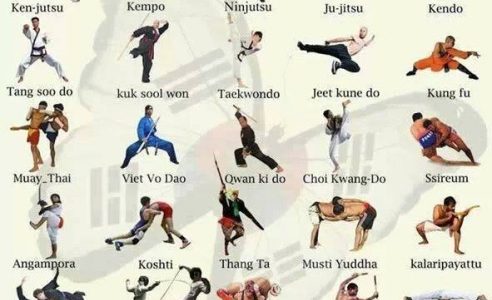Unveiling The Range Of Martial Arts Disciplines: A Guide From Karate To Taekwondo
Unveiling The Range Of Martial Arts Disciplines: A Guide From Karate To Taekwondo
Blog Article
Authored By-Osman Francis
Are you tired of feeling overwhelmed by the substantial world of martial arts? With a lot of designs to pick from, it can be easy to get lost in a sea of strikes, kicks, and mystical names. However worry not!
This discussion will debunk the different fighting styles styles, taking you on a journey from the powerful strikes of Martial arts to the dynamic kicks of Taekwondo. Prepare kung fu to uncover the origins, techniques, and approaches behind these old art forms.
So, tighten your belt and prepare to embark on an enlightening exploration right into the exciting globe of martial arts.
Beginnings of Martial Arts Styles
The origins of martial arts styles can be traced back to ancient human beings and their requirement for self-defense and combat methods. Throughout history, different cultures established their very own one-of-a-kind methods of battling, each with its own collection of strategies and philosophies.
In China, as an example, fighting styles styles such as Kung Fu and Tai Chi were established as a way of self-defense and boosting physical and mental wellness.
In Japan, the samurai warriors created styles like Karate and Judo, concentrating on discipline, precision, and proficiency of the body.
Similarly, in Korea, Taekwondo emerged as a fighting style emphasizing high kicks, fast activities, and mental stamina.
These early human beings laid the structure for the varied array of martial arts styles that exist today, each with its own abundant history and cultural importance.
Techniques and Educating Methods
To master martial arts styles, professionals need to find out various techniques and training techniques.
Methods are the details activities and actions made use of in battle, such as punches, kicks, throws, and blocks. Different fighting styles styles have their own special collection of methods that specialists must master with strenuous training.
Educating methods differ depending on the style, yet they generally entail a combination of physical fitness, drills, competing, and types.
Physical fitness is vital to build strength, versatility, and endurance. martial arts or taekwondo improve their techniques and enhance their speed and accuracy.
Sparring enables professionals to practice their methods in a regulated, practical environment. Kinds, also referred to as kata, are cut-and-dried series of activities that aid practitioners develop muscular tissue memory and focus.
Ideologies and Concepts
Discovering the approaches and principles of martial arts styles can offer you with a deeper understanding of your selected self-control. Each martial art has its own distinct viewpoint and collection of guiding concepts that shape the way it's practiced.
As an example, Martial arts highlights discipline, regard, and self-constraint. It educates practitioners to focus their body and minds, enabling them to safeguard themselves while maintaining a feeling of internal peace.
On https://www.thesheridanpress.com/news/regional-news/jiu-jitsu-students-build-self-confidence-through-self-defense/article_29ab802e-37a5-11ee-9e03-1b4912a49f38.html , Taekwondo positions a strong focus on speed, dexterity, and versatility. Its concepts are rooted in the tenets of courtesy, integrity, determination, self-constraint, and resolute spirit.
Verdict
Now that you've explored the beginnings, strategies, and ideologies of numerous martial arts designs, you have a deeper understanding of these old disciplines.
Picture a young karate trainee, experimenting steady decision and emphasis, breaking through boards with a powerful strike.
Their trip showcases the devotion and toughness called for to master a fighting style, advising us that with discipline and determination, anything is possible.
